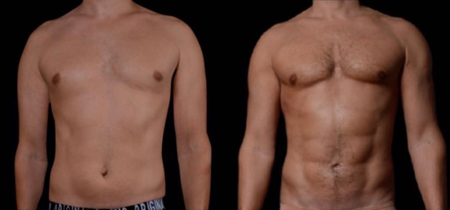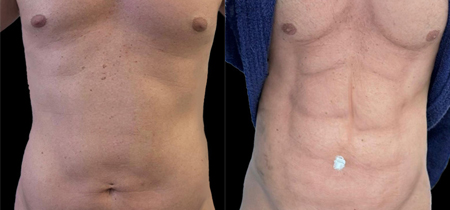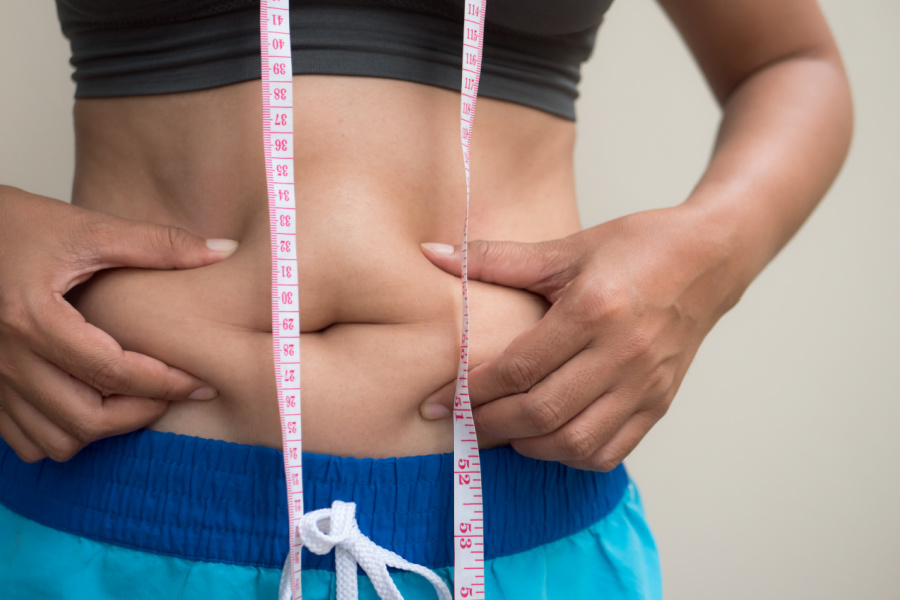Microneedling Recovery & Aftercare with Dr Fasano Congratulations on taking the step toward healthier, rejuvenated skin! Following your microneedling treatment, proper aftercare is essential to...
Introduction
When you are unhappy with the shape of your midsection, it can affect more than just how you look in the mirror. For many people, it impacts confidence, clothing choices, and even quality of life. While exercise and healthy eating are essential for maintaining a toned figure, there are times when lifestyle alone is not enough to reshape the abdomen. Pregnancy, ageing, and significant weight loss can all change the skin, muscles, and fat in ways that diet and exercise cannot reverse.
That is why two of the most popular surgical procedures for abdominal reshaping, abdominoplasty and liposuction, are often compared. At first glance, they might appear to serve the same purpose, but in reality, they target different issues. Some patients require skin removal and muscle repair, others only need fat reduction, while some benefit from a combination.
This article explains the procedures in detail, explores the differences, and guides you towards making an informed choice. By the end, you should feel more confident about whether abdominoplasty or liposuction, or even both, is the right path for you.
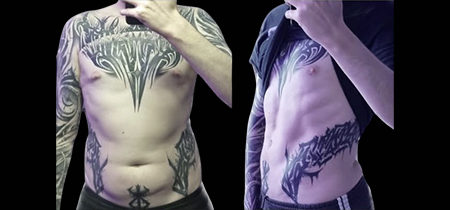
What is abdominoplasty?
Abdominoplasty, more commonly known as a tummy tuck, is a procedure that focuses on removing excess skin and fat while tightening the abdominal wall muscles. Unlike liposuction, it is not just about reducing fat, it is about restoring the overall structure and contour of the abdomen.
This is particularly important for people who have stretched abdominal muscles after pregnancy or have folds of skin following significant weight loss. No amount of exercise can reattach separated muscles or shrink loose skin, making surgery the only solution.
How the procedure works
Abdominoplasty is performed under general anaesthetic. The surgeon makes a horizontal incision across the lower abdomen, usually just above the pubic area so that scars are hidden beneath underwear or swimwear. Through this incision:
- Loose skin is lifted to expose the abdominal muscles.
- The muscles, if stretched or separated, are sutured back together, restoring a tighter abdominal wall.
- Excess skin and fat are removed.
- The remaining skin is pulled down and redraped, creating a smoother surface.
- In most cases, the belly button is repositioned for a natural appearance.
There are variations of the procedure, including mini abdominoplasty, which focuses on the lower abdomen only, and extended abdominoplasty, which also targets the flanks and hips. The right approach depends on the amount of correction needed.
Ideal candidates
Abdominoplasty is well suited to patients who:
- Have lost significant weight but are left with sagging or overhanging skin.
- Have had children and want to correct stretched skin and muscles.
- Struggle with “apron belly” (pannus) which causes rashes or discomfort.
- Are at or near their target weight but cannot tighten their abdomen with lifestyle changes alone.
Benefits and limitations
The benefits of abdominoplasty extend beyond appearance:
- Restores firmness and smoothness to the abdomen.
- Repairs separated muscles, which can improve posture and reduce back pain.
- Removes redundant skin, which can improve hygiene and comfort.
- Provides lasting results when combined with a healthy lifestyle.
Limitations include:
- It is a major surgical procedure requiring weeks of downtime.
- It leaves a scar across the lower abdomen, although it fades over time and is easily concealed.
- It is not a substitute for weight loss and is not suitable for patients significantly overweight.
What is liposuction?
Liposuction is a surgical method of removing stubborn fat deposits that do not respond to diet and exercise. Unlike abdominoplasty, it does not involve skin removal or muscle repair. Instead, it sculpts and refines body contours, making it an excellent choice for those who are already close to their desired weight but need help with resistant areas of fat.
How the procedure works
Liposuction is usually performed under general anaesthetic or sedation. Small incisions are made in the skin, often just a few millimetres in length. A thin tube called a cannula is inserted to loosen and suction out fat cells.
Advanced methods such as VASER liposuction use ultrasound technology to liquefy fat before removal, making extraction smoother and less traumatic to surrounding tissues. This allows for greater precision and often speeds up recovery.
Ideal candidates
Liposuction is most effective for people who:
- Have stubborn pockets of fat in areas such as the lower abdomen, hips, or flanks.
- Are not significantly overweight but want improved body proportions.
- Have good skin elasticity, meaning the skin will retract naturally after fat is removed.
- Want subtle reshaping rather than a dramatic transformation.
Benefits and limitations
Benefits include:
- Removes fat with minimal scarring.
- Shorter recovery period compared with abdominoplasty.
- Can be performed on multiple areas of the body in a single session.
- Provides noticeable improvement in contour and shape.
Limitations include:
- Does not tighten loose or sagging skin.
- Cannot correct stretched or separated abdominal muscles.
- Best results are seen in patients with good skin quality.
 Abdominoplasty or Liposuction: The Key Differences
Abdominoplasty or Liposuction: The Key Differences
While both aim to improve the appearance of the abdomen, they address very different issues.
- Treatment goals: Abdominoplasty is about skin removal and muscle tightening, while liposuction is about fat removal.
- Recovery: Abdominoplasty requires several weeks of downtime, whereas liposuction recovery is measured in days to a couple of weeks.
- Scarring: Abdominoplasty results in a longer scar across the abdomen, while liposuction leaves only small, discreet scars.
- Results: Abdominoplasty produces a flat, tight abdomen but involves more healing, while liposuction delivers subtle contouring with less downtime.
For some patients, one option is clearly more suitable. For others, a combination delivers the best outcome.
When Abdominoplasty May Be Best
If you are concerned about sagging skin or stretched muscles rather than fat, abdominoplasty is usually the right choice.
- Excess skin: After weight loss or pregnancy, the skin often lacks elasticity. Abdominoplasty removes this skin for a firmer look.
- Muscle repair: Diastasis recti, a common condition after pregnancy, cannot be fixed with exercise but can be surgically corrected.
- Major reshaping: For patients looking for a dramatic change, abdominoplasty offers more than liposuction alone.
When Liposuction May Be Best
If your concern is localised fat and your skin is firm, liposuction is likely the better choice.
- Stubborn fat: Liposuction is perfect for people who are fit and healthy but have “problem areas” resistant to diet.
- Good elasticity: Younger patients or those with resilient skin are ideal candidates.
- Targeted contouring: If you want a subtle, refined change rather than a large-scale transformation, liposuction is highly effective.
Can Both Procedures Be Combined?
In many cases, abdominoplasty and liposuction are performed together. This combination allows surgeons to remove fat through liposuction and then address loose skin and muscle through abdominoplasty.
For example, a post-pregnancy patient may have both loose skin and stubborn fat around the waist. Combining the two procedures can provide the most natural and comprehensive result.
Risks and Considerations
Every surgical procedure has risks, and these should be fully understood before making a decision.
- General risks: Infection, bleeding, poor healing, and complications from anaesthesia.
- Abdominoplasty risks: Fluid collection (seroma), numbness, and more visible scarring.
- Liposuction risks: Irregular contours, uneven fat removal, or changes in skin sensation.
Selecting a skilled surgeon with extensive experience greatly reduces these risks.
Recovery and Aftercare
Abdominoplasty recovery
Patients should expect at least two weeks away from work and up to six weeks before resuming full activity. Compression garments are worn to reduce swelling and support healing. Walking is encouraged early on to aid circulation, but heavy lifting and exercise must be avoided until cleared by the surgeon.
Liposuction recovery
Most patients return to normal activities within a week, although bruising and swelling can last for several weeks. Compression garments help skin adjust to its new contours.
Long-term care
For both surgeries, maintaining a healthy lifestyle is essential. Weight fluctuations or further pregnancies can affect the results, so patients are advised to undergo surgery only when they are stable in weight and family planning.
Choosing the Right Surgeon For Abdominoplasty or Liposuction
Choosing between abdominoplasty or liposuction is only part of the journey, selecting the right surgeon is just as important.
Why choose Dr Fasano?
Dr Fasano is a highly experienced surgeon specialising in advanced body contouring. He combines medical precision with an artistic eye, tailoring each treatment to the patient’s unique anatomy. His approach ensures results are natural, proportionate, and safe.
Clinics in London and Birmingham
Dr Fasano operates at leading clinics in London and Birmingham, offering state-of-the-art facilities and exceptional standards of care. Whether you are considering abdominoplasty, liposuction, or a combination, you can be confident of being guided through every stage with expertise and compassion.
Booking a consultation allows you to discuss your goals in detail, receive an assessment, and learn which procedure, or combination, is best suited to you.
Recap
If you are deciding between abdominoplasty or liposuction, the choice ultimately comes down to what you want to achieve. Abdominoplasty is best for those with loose skin and muscle weakness, while liposuction is best for fat reduction in patients with good skin tone. For some, combining both offers the most comprehensive results.
The right choice is deeply personal and best made in consultation with an experienced surgeon. By seeking advice from Dr Fasano at his London or Birmingham clinics, you can take the first step towards a body shape that feels more comfortable, natural, and confident.


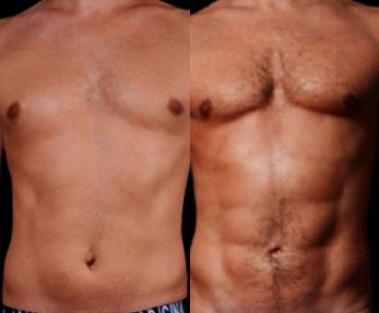 Abdominoplasty or Liposuction: The Key Differences
Abdominoplasty or Liposuction: The Key Differences